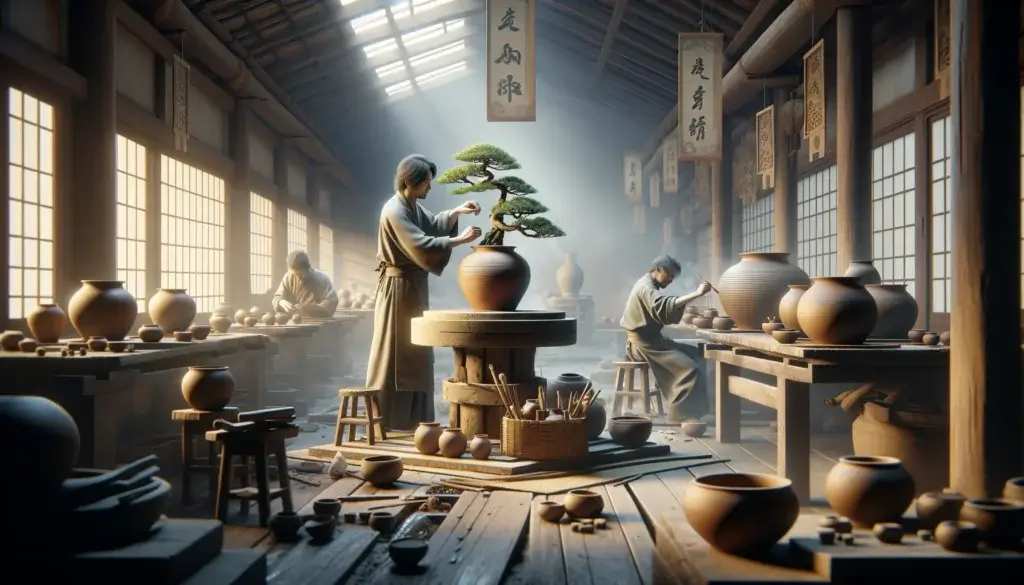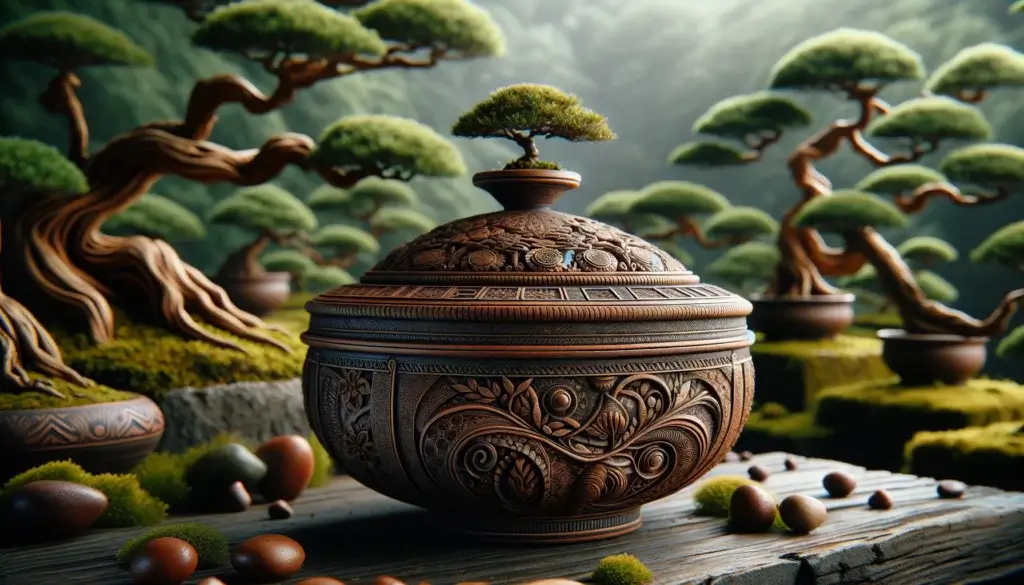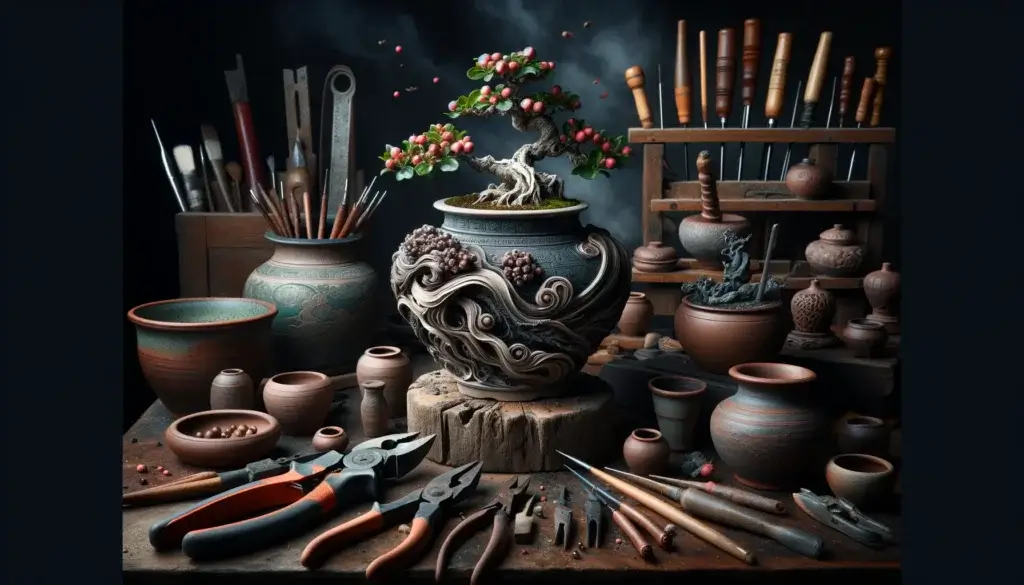
Are you scratching your head wondering why a tiny pot for your bonsai tree costs more than a fancy dinner out? It’s not just you. Many enthusiasts find their eyebrows rising when they see the price tag on high-end bonsai pots.
At first glance, these prices can seem steep for something that holds dirt and a miniature tree.
One surprising fact is that each bonsai pot is often handcrafted by skilled artisans who have dedicated years to mastering their craft. In this blog post, we’ll dive into the reasons behind the hefty price tags of these pots and explore options for every budget.
By understanding what goes into making these specialized containers, you might find yourself appreciating them as much as the trees they cradle. Ready to unearth some secrets? Let’s get started!
Key Takeaways
- Bonsai pots are expensive because they are handmade by skilled artists, and each one is unique.
- The price of a bonsai pot can depend on its rarity, the quality of materials used, and how complex the design is.
- For those with less money to spend, there are cheaper mass – produced bonsai pots or DIY options using clay or ceramics.
- Some well – known potters make affordable bonsai pots that still show great craftsmanship.
- The high cost reflects the value put into creating these mini art pieces for growing bonsai trees.
Factors That Contribute to the High Cost of Bonsai Pots

The high cost of bonsai pots can be attributed to factors such as craftsmanship, rarity, material, and design complexity. Each of these elements contributes to the overall value and quality of the pots used for these prized horticultural specimens.
Craftsmanship

Craftsmanship matters a lot in making bonsai pots. Every pot is handmade by skilled artists. These masters use special techniques to shape, bake, and paint each container. They spend years learning how to craft these mini wonders.
Bonsai pots are not just regular containers; they are pieces of art. Each one has its look and feel because an artist makes it by hand. This unique touch adds value but also raises the price you pay for quality and beauty.
Rarity

Rare bonsai pots are highly sought after by collectors and enthusiasts due to their scarcity and unique qualities. These pots often carry historical significance, with some being considered antique pieces that have been passed down through generations.
The rarity of these pots contributes significantly to their high prices, as they become prized possessions for those who appreciate the value of owning a piece of history in the form of a meticulously crafted container for their beloved bonsai trees.
Even though rare bonsai pots may come with a hefty price tag, their scarcity and distinctive characteristics make them coveted items within the horticulture community.
Material

Premium-grade materials are a key factor contributing to the high cost of bonsai pots. Specialized techniques and master pottery skills are often employed to create these containers, increasing their value.
The use of high-end materials ensures durability and longevity, making them a worthwhile investment for serious bonsai enthusiasts looking for quality and functionality in their pots.
Moving on to “Design complexity,” let’s delve into how intricate designs can impact the pricing of bonsai pots.
Design complexity

The design complexity of bonsai pots influences their cost, with intricate detailing and unique shapes adding to the overall value. Craftsmen invest time and skill in creating complex designs, using special techniques that set these pots apart.
The demand for rare and high-quality bonsai trees has also increased the market value of intricately designed pots, further contributing to their expense. Antique bonsai pots with elaborate designs are particularly sought after by collectors, commanding high prices due to their historical significance and craftsmanship.
Affordable Options for Bonsai Pots

Explore affordable pots from well-known potters or look into cheaper mass-produced options, and even consider DIY options for budget-friendly pots. Find out more about these alternatives by checking out the full blog!
Affordable pots from well-known potters
Budget-conscious bonsai enthusiasts can find solace in the availability of affordable pots from renowned potters. These pots, while reasonably priced, still exhibit the master craftsmanship and quality materials associated with high-end containers, making them a practical and economical choice for cultivating their cherished bonsai trees.
Notably, these budget-friendly options provide an avenue for individuals to invest in the central component of the art of bonsai without compromising on quality or aesthetic appeal.
Cheaper mass-produced options

Mass-produced bonsai pots offer budget-friendly alternatives for enthusiasts. These options are more accessible and affordable than premium-grade handcrafted ones, ensuring that more people can enjoy the art of bonsai without breaking the bank.
While they may lack the individuality and master craftsmanship of high-end containers, these cheaper mass-produced pots still provide functionality at a lower cost, making them an attractive choice for those looking for practical solutions without compromising quality.
Budget-conscious buyers can explore an array of wallet-friendly mass-produced bonsai pots available in the market, meeting their needs while staying within their budget constraints.
DIY options for budget-friendly pots

Crafting your bonsai pots is a cost-effective option. Utilize affordable materials like clay or ceramic to create unique and personalized containers. Embrace creativity by hand-painting designs on the pot for a custom touch, boosting both affordability and individuality in your bonsai display.
Opt for affordable mass-produced options, or craft your pots from scratch using readily available materials. Personalizing your pots allows you to infuse them with practical functionality while expressing your unique flair in the art of bonsai cultivation.
Conclusion
In conclusion, bonsai pots command high prices due to the craftsmanship, rarity, materials, and design complexity. Finding affordable options from well-known potters or considering cheaper mass-produced alternatives can be practical choices for enthusiasts on a budget.
The significance of bonsai pots lies in their contribution to the art of cultivating these living masterpieces. Embracing these insights can lead to more informed decisions when investing in bonsai pots.
Seek further guidance from experienced practitioners or explore additional resources to deepen your understanding of this captivating art form.
FAQs
1. Why are bonsai pots so expensive?
Bonsai pots can be costly due to the premium-grade materials used and the special skills needed to handcraft these high-end containers.
2. Are all bonsai tree prices high because of the pots?
Not all bonsai tree prices are high; some budget-friendly options exist, though rare and high-quality bonsai trees with overpriced pots will cost more.
3. What makes a bonsai pot considered a premium item?
A bonsai pot is considered premium when it’s made from top-quality materials by skilled artisans, making them more than just simple containers for plants.
4. Can I find affordable alternatives to expensive bonsai pots?
Yes, there are budget-friendly trees available in less costly containers for those not looking for handcrafted or high-end varieties.
5. Do Japanese traditions influence the price of bonsai pots?
Yes, traditional Japanese methods of creating unique and intricate designs contribute to why some handcrafted bonsai pots have higher prices.
